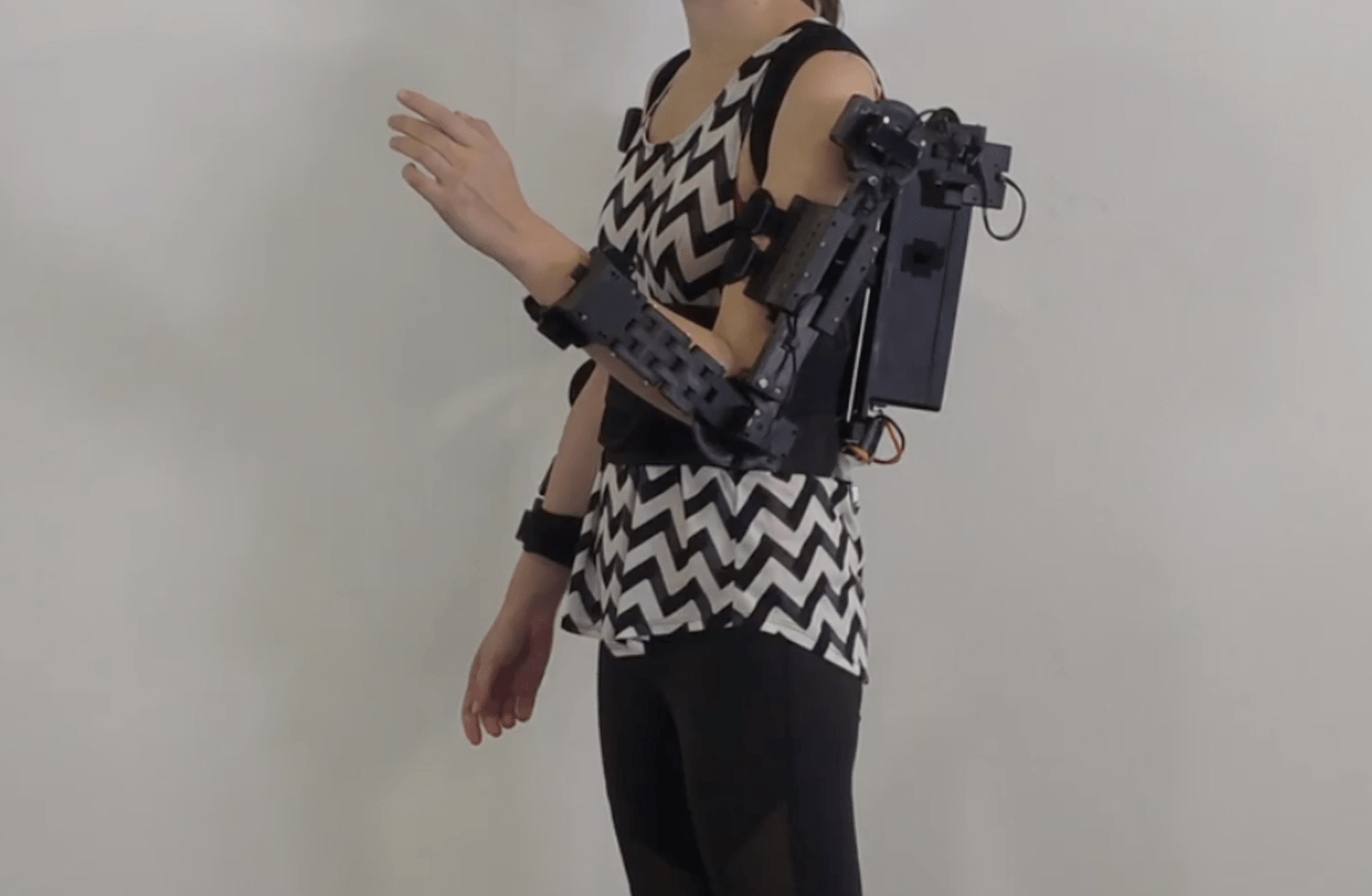Our modern technological world is built upon shared knowledge.If you want to build a car, you don’t have to reinvent the wheel—you can rely on existing research and engineering, so you can skip ahead to the more complex specialized work.Such foundations exist in every industry for every technology, but powered exoskeletons are still very new and foundations are lacking.
That’s why a team from Saarland University’s Human Computer Interaction Lab built ExoKit to give novices a starting point when building exoskeletons.The purpose of ExoKit is to give developers, engineers, and researchers a simple and easy-to-use foundation, so they don’t have to reinvent the “wheel” of powered exoskeletons.ExoKit consists of modular hardware based on popular off-the-shelf components, microcontroller firmware for Arduino development boards, and software tools.
With ExoKit, developers can quickly create functional exoskeleton prototypes.ExoKit takes advantage of Dynamixel servo motors, which are easy to source and relatively affordable.Those are compatible with any Arduino development board, but the Saarland team used an Arduino Mega 2560 paired with a Dynamixel shield.
That can handle up to six servos.The custom mechanical parts were designed in Autodesk Fusion 360.The models are modifiable to suit different exoskeleton designs and are 3D-printable.
Sensors include potentiometers to provide feedback on joint positions and load cells to monitor forces.Tying all of that hardware together is the custom ExoKit firmware library for Arduino development boards.With very minimal programming, developers can use that to start reading sensor data and controlling the servo motors.
Read more about ExoKit in the team’s paper, which was presented at the 2025 ACM CHI Conference on Human Factors in Computing Systems in Yokohama, Japan.









